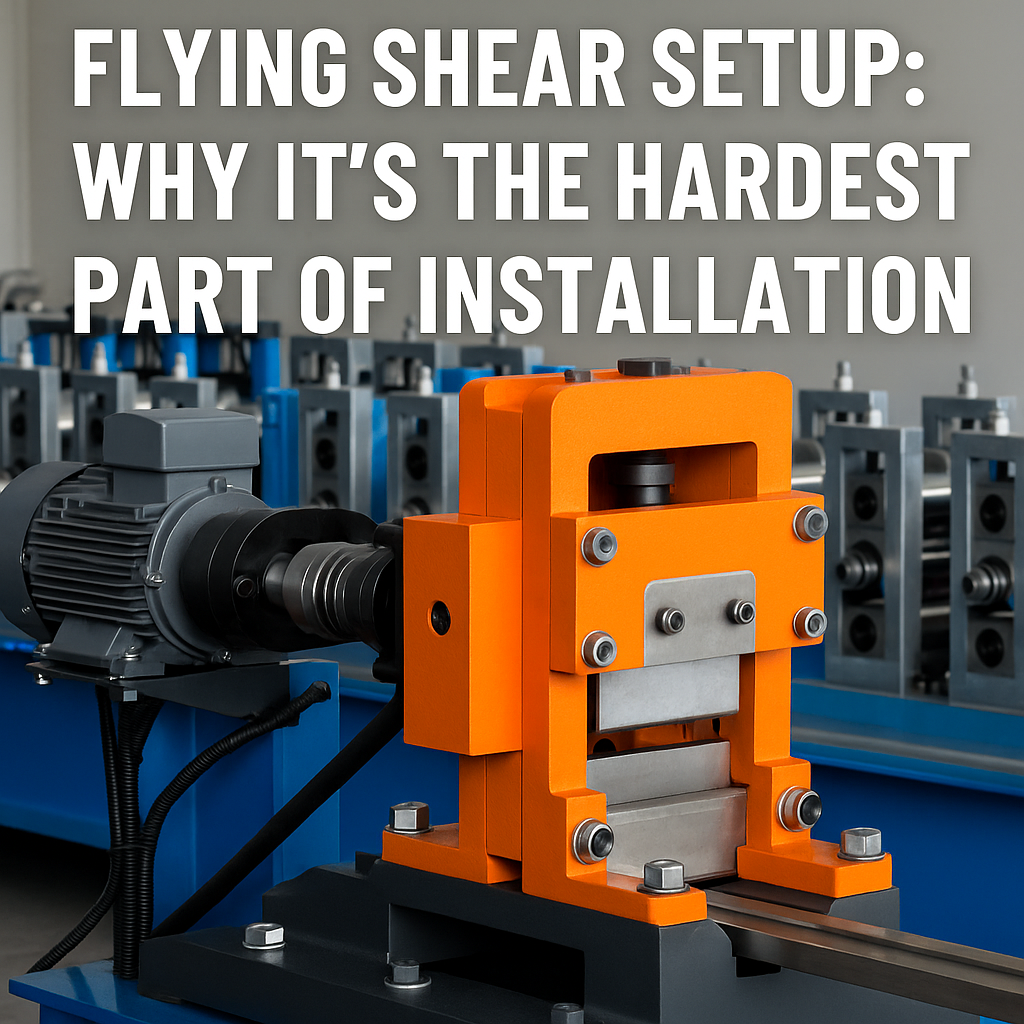
Posted on Sunday, September 29, 2024
In recent years, prefabricated and modular construction has gained momentum due to its efficiency, cost savings, and environmental benefits. At the heart of this trend lies roll forming technology, a key driver in the production of high-quality metal components used in modern construction projects. Roll forming machines enable the precise and customizable fabrication of structural and aesthetic elements, making them indispensable in the world of prefabricated buildings. Let’s explore how roll forming supports this growing trend and enhances the construction process.
One of the critical advantages of roll forming in prefabricated buildings is the ability to produce highly precise components. Roll forming machines use continuous metal sheets that are formed into complex shapes with extreme accuracy, ensuring that every component fits perfectly within the prefabricated design. This precision is essential in modular construction, where pre-made parts must align seamlessly during assembly. The ability to manufacture components with tight tolerances reduces errors on-site, improving overall efficiency and quality.
Roll forming machines offer unparalleled flexibility in design, allowing manufacturers to customize components according to specific project needs. Prefabricated buildings, often constructed off-site, rely on roll forming technology to produce a wide variety of profiles, including wall panels, roofing sheets, studs, and beams. Customization options enable architects and builders to design innovative and unique structures without compromising on quality or speed. Whether it’s creating complex profiles for aesthetic purposes or designing structural components for strength and durability, roll forming provides the flexibility required to meet modern building demands.
The speed at which roll forming machines can produce components is another significant benefit for the prefabricated building industry. Once the machine is set up, it can run continuously, producing large quantities of metal profiles in a short period. This efficiency is crucial in the fast-paced world of construction, where deadlines are tight and delays can be costly. By producing high volumes of components quickly, roll forming helps reduce lead times and ensures that prefabricated elements are ready for assembly when needed. This accelerated production process is a key factor in the growing popularity of modular construction methods.
Roll forming technology contributes to cost savings by minimizing material waste and reducing labor costs. The continuous nature of the roll forming process ensures that raw materials are used efficiently, with little scrap produced. Additionally, the automation of roll forming machines reduces the need for manual labor, further lowering production costs. For prefabricated building manufacturers, this translates to more affordable components, making modular construction an attractive option for both developers and end-users.
Sustainability is a crucial consideration in today’s construction industry, and roll forming technology aligns well with these goals. The process itself is energy-efficient, requiring less power compared to traditional metal fabrication methods. Additionally, many roll forming machines are capable of using recycled metals, further reducing the environmental impact. The precise nature of roll forming also means less material waste, contributing to a more sustainable construction process. As the demand for eco-friendly building solutions increases, roll forming technology plays a vital role in meeting these sustainability standards in prefabricated construction.
The components produced by roll forming machines are designed for easy integration into prefabricated buildings. With precise dimensions and consistent quality, these parts simplify the assembly process on-site. Prefabricated components such as roof panels, wall sections, and structural supports arrive ready to install, reducing the need for extensive cutting, welding, or modifications during construction. This not only saves time but also ensures a safer and cleaner work environment, as fewer processes are needed on the construction site.
Roll forming technology is revolutionizing the prefabricated building industry by providing high-quality, customizable, and efficient solutions for modern construction needs. From precise component production to environmental sustainability, roll forming machines are playing a critical role in advancing modular and prefabricated building methods. As demand for faster, cost-effective, and environmentally conscious construction continues to rise, roll forming will remain at the forefront, shaping the future of the built environment.
By incorporating roll forming technology into the prefabricated building process, developers and manufacturers can achieve higher efficiency, lower costs, and improved precision, all while meeting the design flexibility and sustainability goals of modern construction.

Flying Shear Setup: Why It’s the Hardest Part of Roll Forming Machine Installation
Posted on Monday, November 24, 2025
If you want a header image, meta description, or series continuation, just tell me.

Why Proper Roll Forming Machine Setup Determines Your Production Quality
Posted on Monday, November 24, 2025
The #1 factor that decides accuracy, scrap rate, speed, and consistency.

Compliance & Safety Services for Roll Forming Machines — Full Guide
Posted on Sunday, November 23, 2025
How Machine Matcher keeps your machines safe, legal, and fully compliant with CE, UL, and UKCA standards.

Machine Health Monitoring for Roll Forming Machines — Complete Diagnostic Service Guide
Posted on Sunday, November 23, 2025
Continuous diagnostics that prevent breakdowns, reduce downtime, and extend machine life.
Copyright 2025 © Machine Matcher.